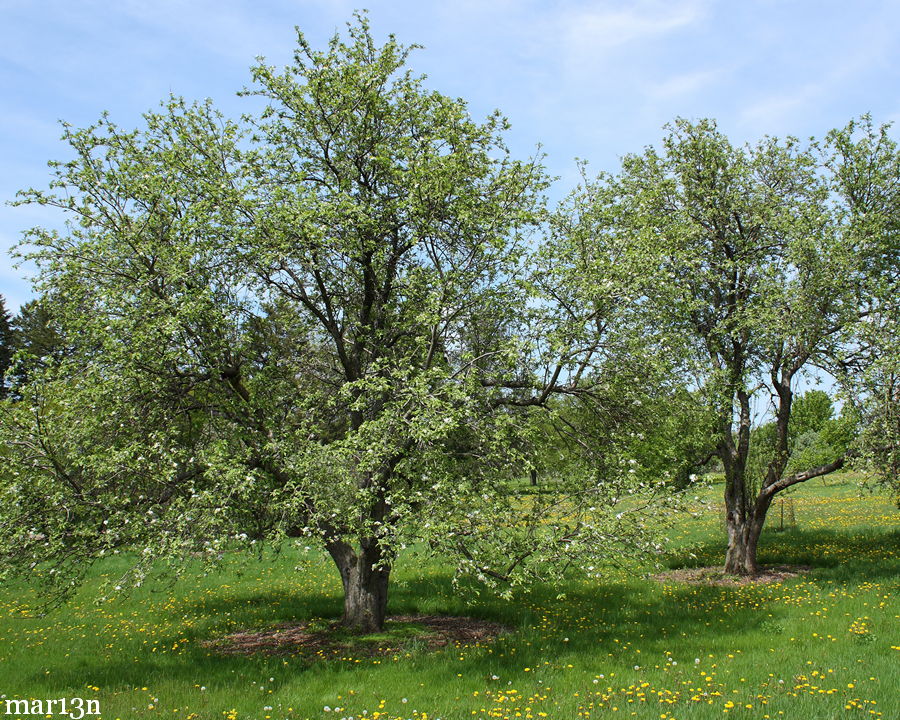Apple Tree – Common for Grafting or Wild
Scientific Name: Malus domestica
Zone: 3-8 Click Here to Find your Zone
Mature Height: 18-40 ft
Mature Width: 18-24 ft
Growth Per Year: Slow to Medium (up to 24″)
Wet Tolerant: Thrives in well drained, moist soil
Drought Tolerant: Moderately
Shade Tolerant: Loves the sun!
Description
The domestic apple is in the Rosaceae ( rose) family which is one of the largest of the plant families and is widely distributed throughout the temperate parts of the world. The genus for apple is Pyrus which includes pear, mountain ash, quince and apple. The apple flower is generally white with tints of red-pink. Apple is one of the later blooming of the fruit trees and as such it is better suited for those of us who live in areas where late frosts are common. We sell the common apple rootstock for grafting and for affordable wildlife food. The wood of the apple is aromatic, hard, heavy and makes excellent firewood and smoking wood. Apples have the widest range of all the fruit trees in the states and are common from Maine to Georgia.
Wildlife: Great wildlife food source. Apples and seeds have been found in the stomachs of deer, foxes, fishers, porcupines, bobcats, and red squirrels. In addition, many birds and butterflies are supported by the nectar and sap from the apple tree. Measures may want to be taken to protect the bark of young apples from mice, deer and rabbit damage in the winter. Tree tubes are a great way to promote growth and protect the trees at the same time.
History: Apples have been domesticated for thousands of years and seem to have their origins in Eurasia. Apples were probably the first fruit brought over to America by the first European settlers. Of course we have all heard of Johnny Appleseed, born John Chapman in 1774. Johnny was a trained nurseryman who had a 1,200 acre orchard of his own. About 1800 he started his trek westward distributing apple seed he obtained from cider presses back in Pennsylvania. I do believe he passed this way before his death in 1845 and my hundreds of wild apples prove so.

